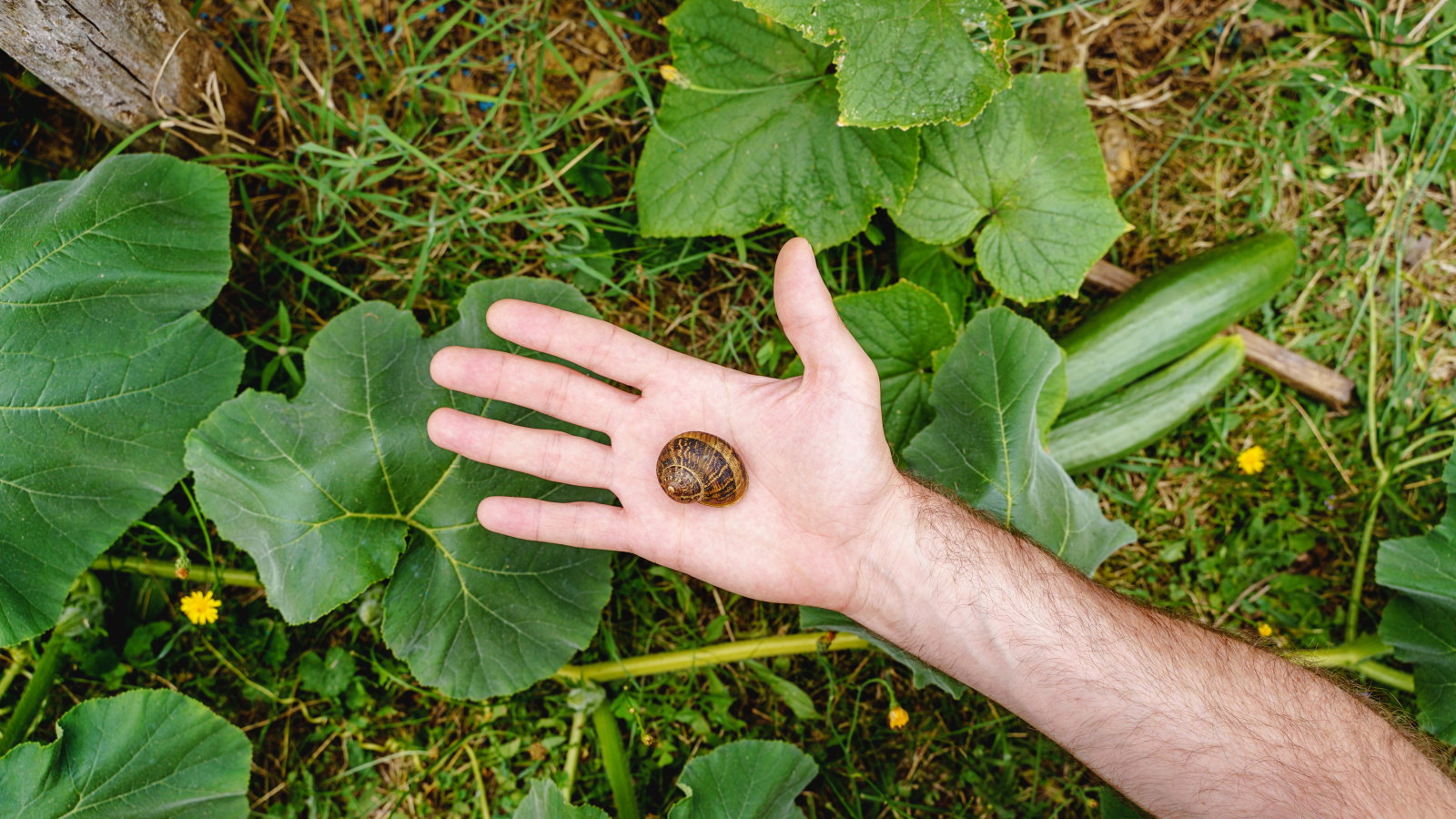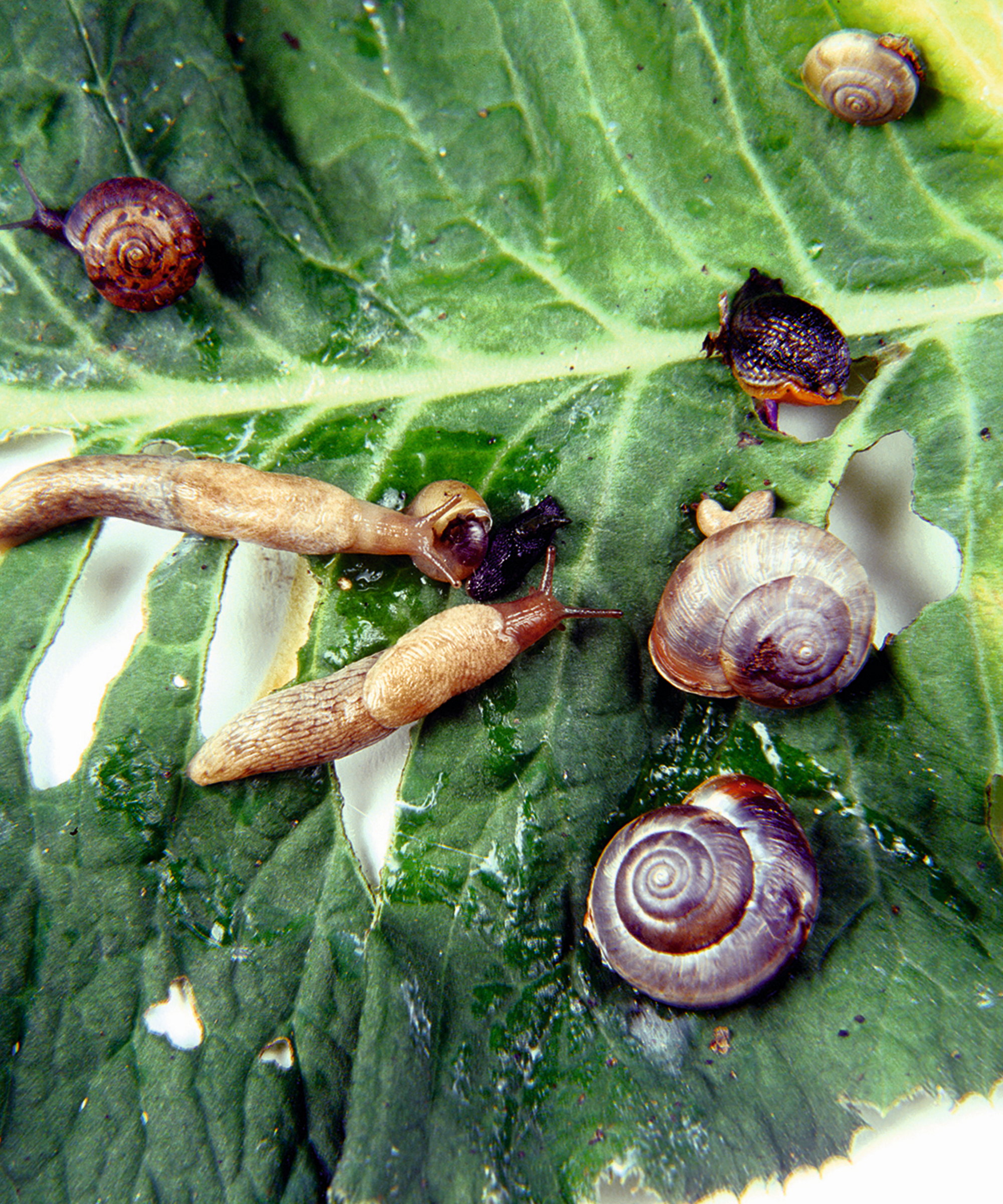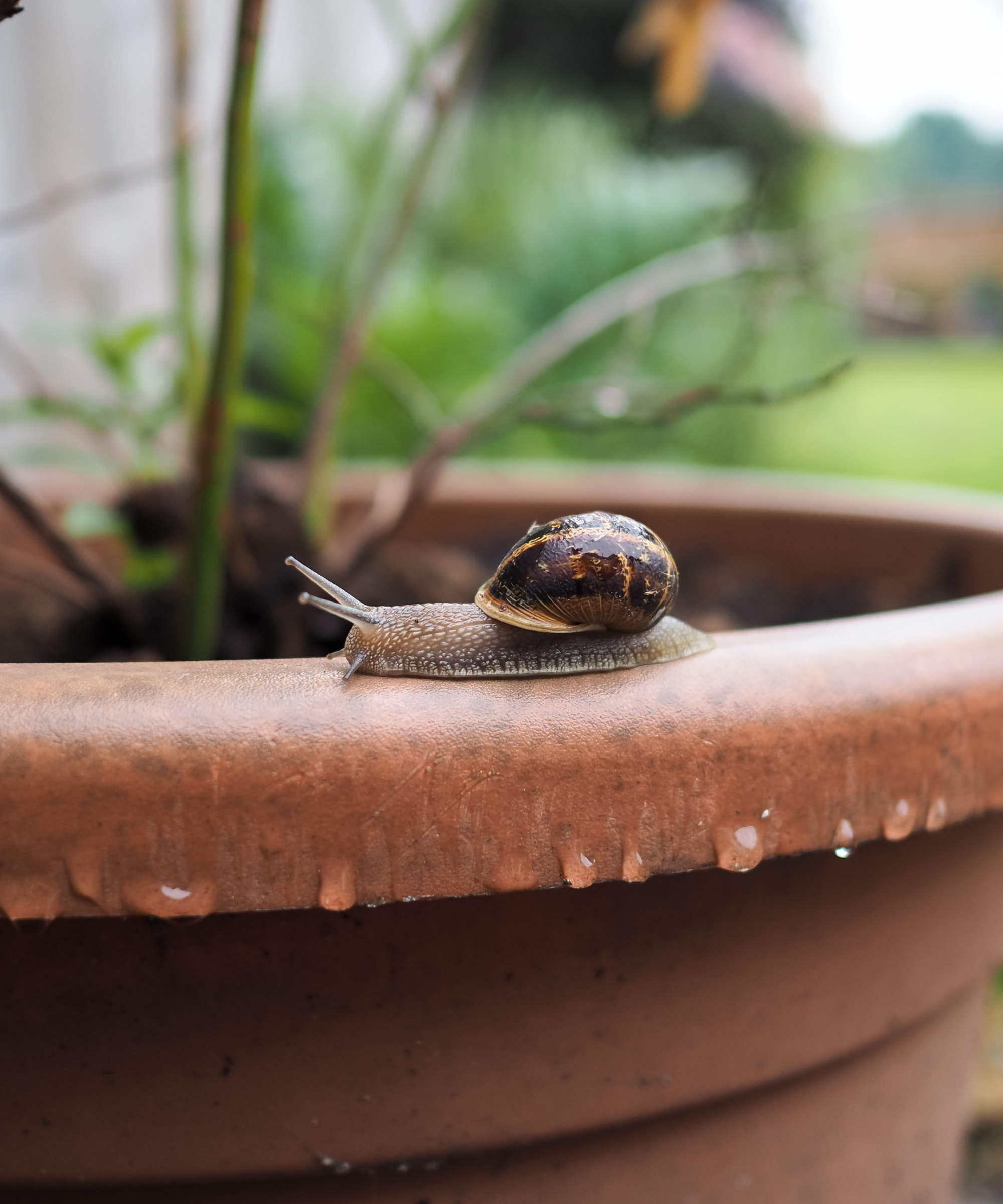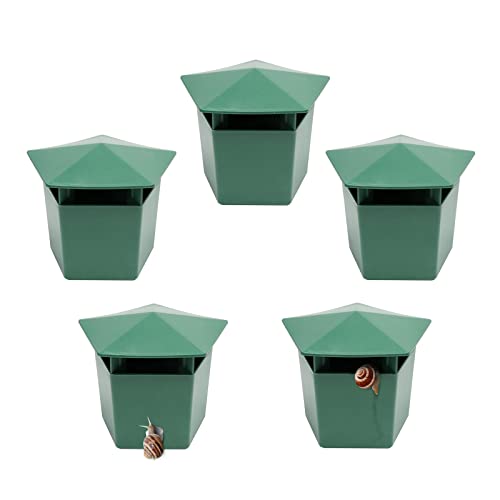Doing this one thing every evening will stop snails from wreaking havoc in your garden – and your plants will thank you
A spring evening is the perfect time to go snail and slug hunting


Are you sick of slugs and snails causing damage, munching their way through leaves and tender plants in your garden? Well, it may sound gross, but hand-picking snails and slugs is one sure-fire way to keep on top of the troublesome pests.
If snails and slugs are causing you a headache, heading out into the yard with a flashlight on a spring evening presents an ideal opportunity to remove lots of these molluscs and get them away from your precious plants.
Hand-picking snails may not sound glamorous, but when done in partnership with other control measures, it's a sound way to get rid of snails from a garden. So let's look at when these pests are most active and why hand-picking snails should be on your to-do list this spring.

Hand-picking snails – when to hunt
Snails and slugs become more active in spring. From late March or early April onwards, they get more active as the newest generation of young snails hatch.
The cool and moist conditions that are common in spring ideally suit molluscs. They adore shaded and damp areas, especially during the day, where they can hide away from sunlight before coming out to feed when the temperatures and light drop.
Most snails and slugs predominantly move in the early evening, morning, and night. They are susceptible to drying out during the warmer hours and tend to remain dormant, hiding in those cooler and damper corners or under rocks and logs.
As the unwanted pests come out in the evening, this offers a great opportunity to catch them in the act, nibbling on tender plants and munching holes in the leaves and stems of plants.
Design expertise in your inbox – from inspiring decorating ideas and beautiful celebrity homes to practical gardening advice and shopping round-ups.
A mild evening, especially after a damp or cloudy day, offers a fantastic opportunity to hunt snails, stop slugs destroying plants, and remove both from your garden.
Hand-picking snails – how to hunt

When the light levels drop, head out into the garden with a flashlight and a pair of protective gloves to inspect your plants, checking all over the plant, including underneath the leaves, and around the pots in container gardens.
Keep your eyes peeled for their distinctive slime trails and check under low-growing plants, flower pots, rocks, debris, or wooden planks to reveal slugs or snails still in their classic hiding spots.
Any snails or slugs you find can be picked up and put into a container. If you fill that container with soapy water, the pests will drown in the solution.
However, if you do not want to kill them, the gathered snails and slugs can be relocated away from precious plants or left in the open for predators such as birds, hedgehogs, or frogs.
One nightly hunt won’t make much of a dent in the local slug or snail population, so be sure to go out on consecutive nights to keep disposing of the pests. And combine regular evening snail hunts with other slug control methods.
Such methods may include surrounding plants with rough surfaces, like crushed eggshells or small gravel, using beneficial nematodes, or placing beer traps around the garden. Containers filled with beer will attract and trap slugs and snails, so they should be emptied and refilled every few days.
Combining hand-picking snails with other control measures will help to get rid of slugs and snails, making a helpful impact on the population and preventing the pests from nibbling holes in your leaves and flowers.
On top of adding control measures, and heading out at night hand-picking snails and slugs to keep on top of populations, picking your planting wisely can also help to reduce pest problems.
To learn more and get specific planting tips, our guides to snail repellent plants and slug repellent plants reveal inspirational ideas to deter the pests naturally and stop them from munching your favorite plants.

Drew has worked as a writer since 2008 and was also a professional gardener for many years. As a trained horticulturist, he worked in prestigious historic gardens, including Hanbury Hall and the world-famous Hidcote Manor Garden. He also spent time as a specialist kitchen gardener at Soho Farmhouse and Netherby Hall, where he grew vegetables, fruit, herbs, and cut flowers for restaurants. Drew has written for numerous print and online publications and is an allotment holder and garden blogger. He is shortlisted for the Digital Gardening Writer of the Year at the 2025 Garden Media Guild Awards.


